Few bird families capture the imagination quite like finches, these seed-cracking specialists whose remarkable diversity brings vibrancy to Britain's skies year-round.
With their distinctive conical bills and varied plumage, finches add both colour and character to gardens, woodlands, and farmlands across the UK.
Whether you're an experienced birdwatcher or simply enjoy the visitors to your garden feeder, understanding the different finch species enriches any wildlife encounter.
Common UK Finch Species
Chaffinch
Fringilla coelebs
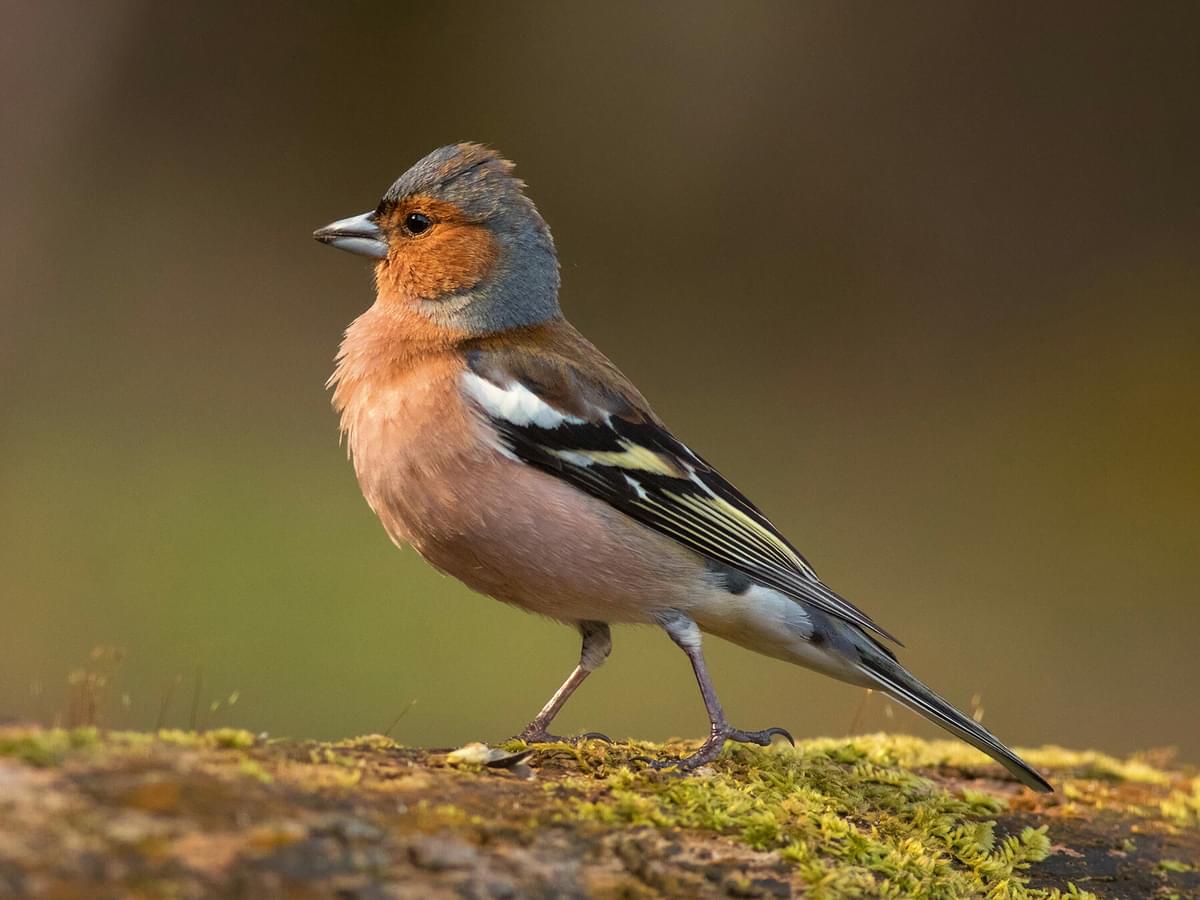
Length
14-16cm
Wingspan
24-28cm
Weight
18-29g
Regional Rarity Score
Ranges from 0 (common) to 100 (extremely rare) in this region
The Chaffinch reigns as the UK's most common finch, with over 6 million breeding pairs.
Males sport a pinkish-red breast and cheeks, bluish-grey cap, and distinctive white wing bars that flash conspicuously in flight.
Females, though more subdued with olive-brown plumage, share the same white wing markings. Their cascading song ends with a characteristic flourish that resonates through woodlands and gardens from early spring.
Chaffinches often feed on the ground beneath hedgerows and trees, performing a distinctive double-hop forward as they search for seeds and insects. During winter, they form loose flocks in farmland and woodland edges, sometimes joining other finch species in mixed feeding groups.
European Goldfinch
Carduelis carduelis
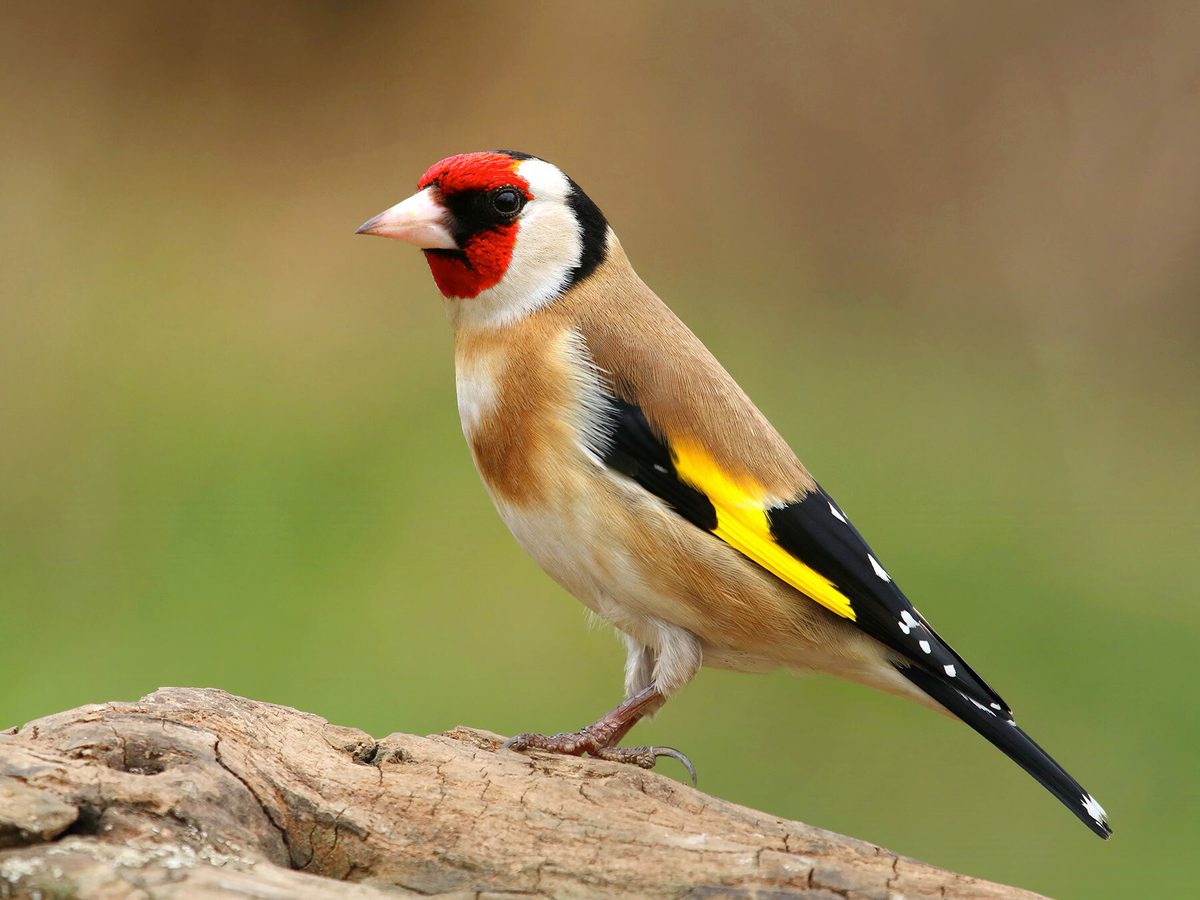
Length
12-13cm
Wingspan
21-25cm
Weight
14-19g
Regional Rarity Score
Ranges from 0 (common) to 100 (extremely rare) in this region
Perhaps the most visually striking of British finches, the Goldfinch boasts a distinctive red face, black and white head, and bright yellow wing bars.
These colourful birds have experienced a remarkable 91% population increase since 1995, becoming increasingly common garden visitors.
Watch for Goldfinches feeding on teasels and thistles in autumn, their agile bodies clinging to swaying seedheads as they extract seeds with remarkable dexterity.
Their tinkling, liquid call often alerts birdwatchers to their presence before their colours come into view. In winter, they form charming, chattering flocks that move through the landscape like living confetti.
Greenfinch
Chloris chloris
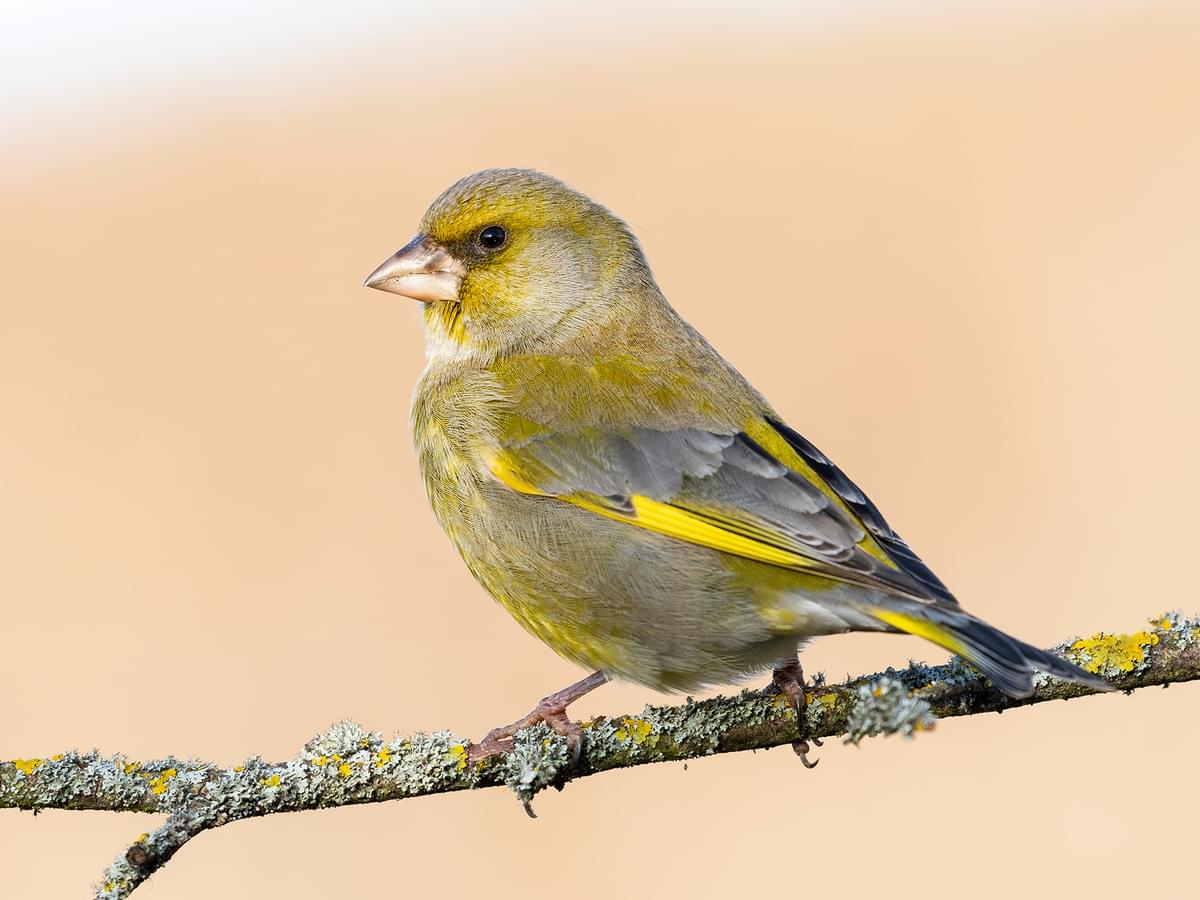
Length
14-16cm
Wingspan
24-28cm
Weight
25-35g
Regional Rarity Score
Ranges from 0 (common) to 100 (extremely rare) in this region
The robust Greenfinch displays olive-green plumage with distinctive yellow edges to the wing and tail feathers that flash during its undulating flight. Males appear brighter, especially during the breeding season.
These once-common garden birds have suffered significant declines since 2006 due to trichomonosis disease, with populations falling by 66% in a decade.
Greenfinches are bolder and more dominant at feeders than other finches, often muscling smaller birds aside. Their nasal "dzweee" call is distinctive, while their song comprises a mix of trills and wheezes delivered from prominent perches in spring.
Bullfinch
Pyrrhula pyrrhula
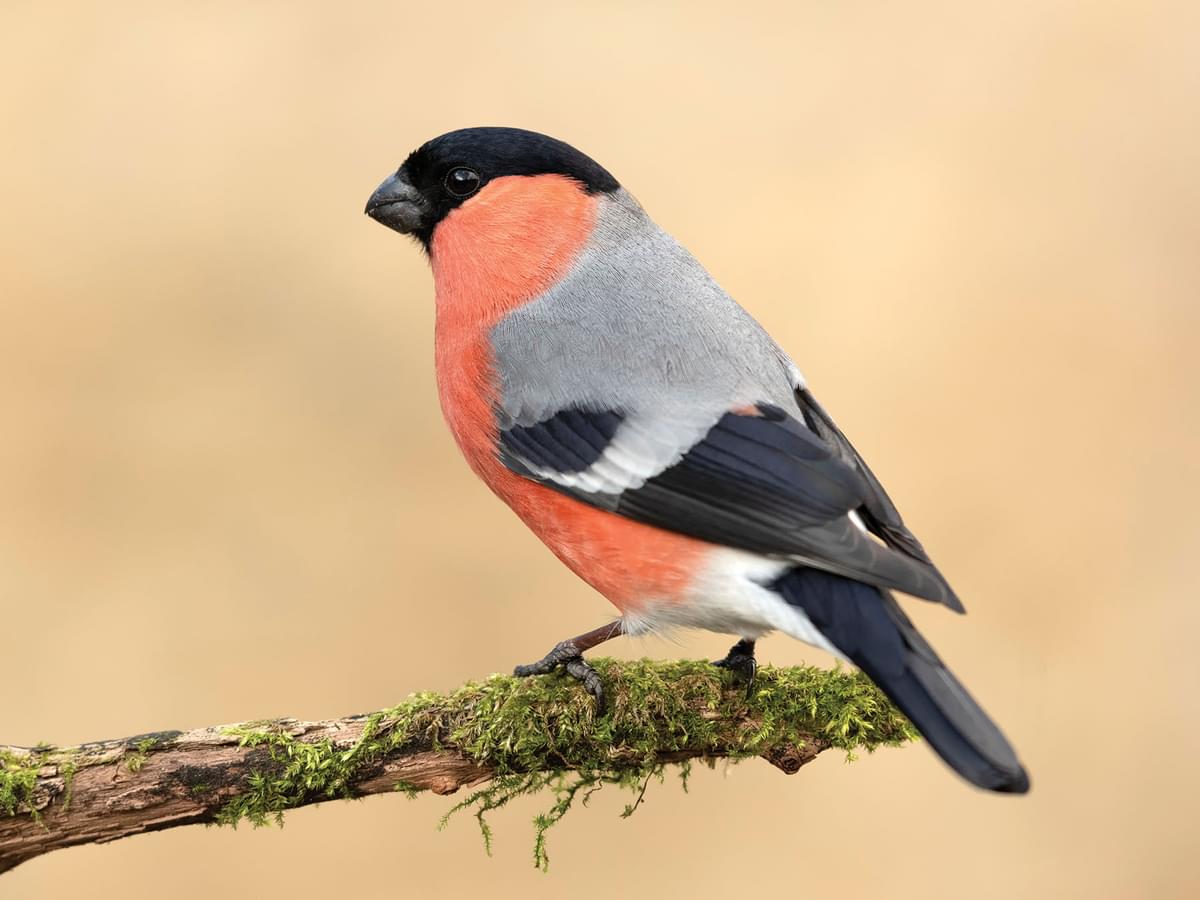
Length
14-16cm
Wingspan
22-26cm
Weight
21-27g
Regional Rarity Score
Ranges from 0 (common) to 100 (extremely rare) in this region
The secretive Bullfinch is instantly recognisable by its black cap, grey back, and—in males—a stunning rose-pink breast that seems to glow against winter vegetation.
Despite their vibrant colouring, Bullfinches are surprisingly inconspicuous, often remaining hidden in dense cover and betraying their presence only with a soft, melancholy whistling call.
These shy finches have specialised feeding habits, with a particular fondness for tree buds in spring. Watch garden fruit trees carefully during February and March; you might spot pairs of Bullfinches methodically working through the buds. Their short, thick bills are perfectly adapted for this precise work.
Eurasian Siskin
Spinus spinus
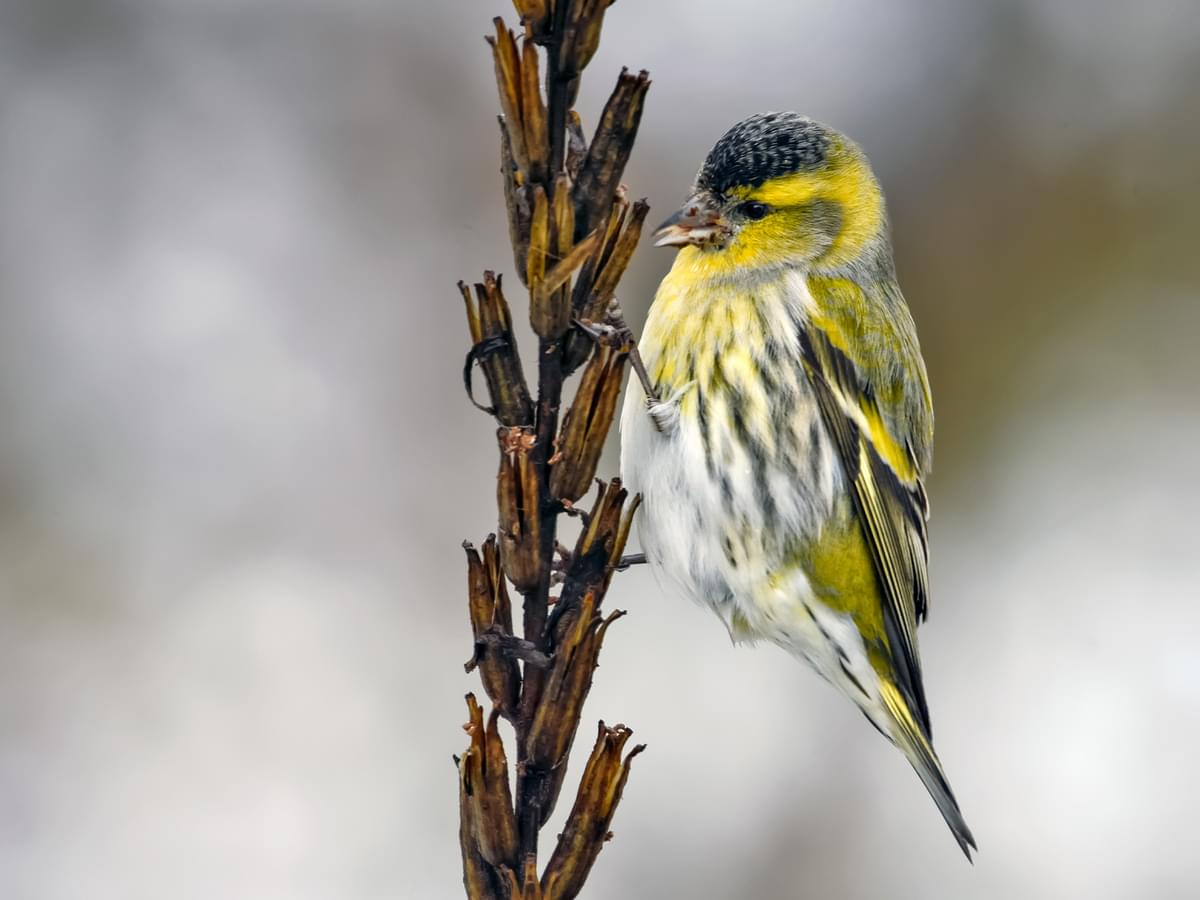
Length
11-12.5cm
Wingspan
20-23cm
Weight
10-18g
Regional Rarity Score
Ranges from 0 (common) to 100 (extremely rare) in this region
These small, streaky yellow-green finches with black caps (in males) and distinctive forked tails are primarily woodland birds that increasingly visit gardens during winter.
Siskins demonstrate remarkable acrobatic ability, often feeding upside-down on alder cones and birch catkins, or clinging to the very tips of conifer branches.
During autumn and winter, garden feeders—particularly those stocked with nyjer seeds or sunflower hearts—may attract small flocks of these energetic birds. Their rapid twittering and zealous feeding behaviour make them captivating to watch.
Brambling
Fringilla montifringilla
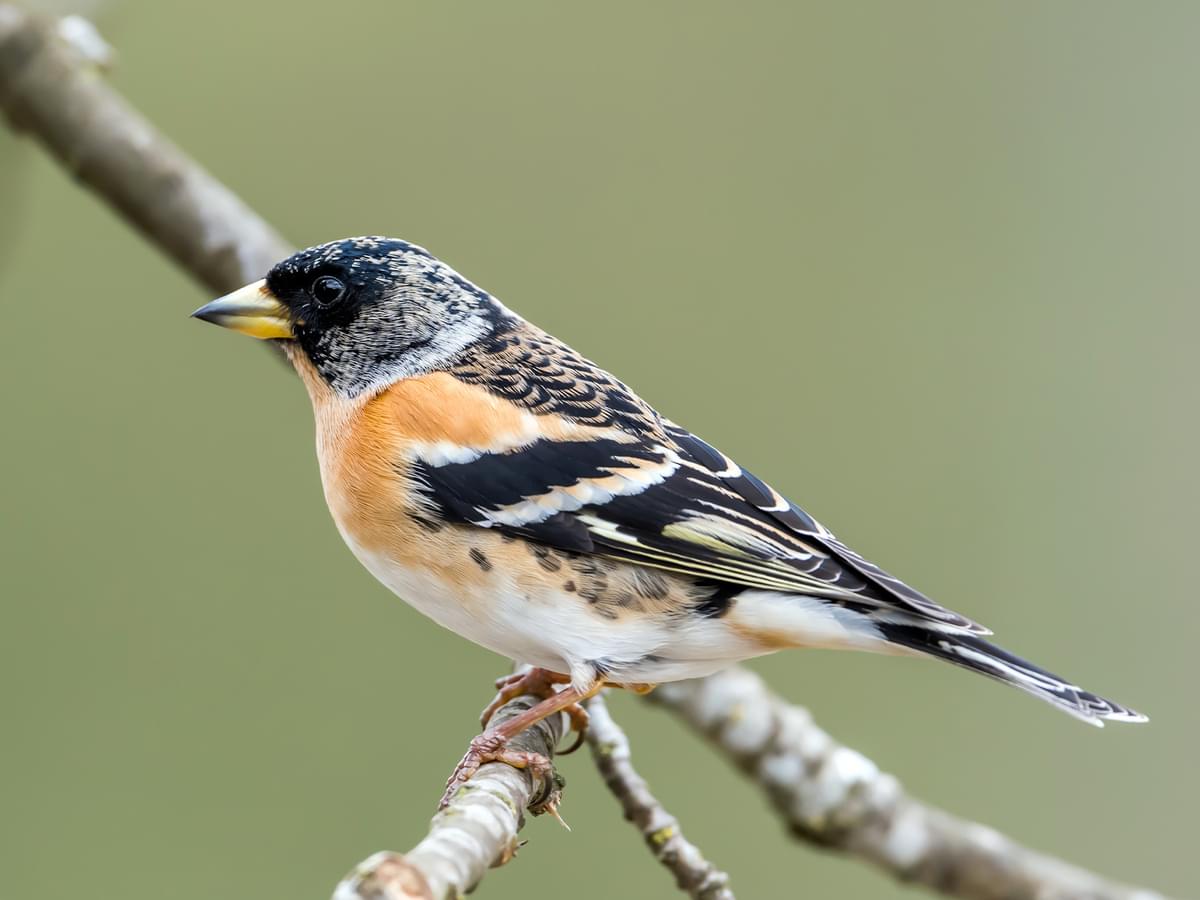
Length
14-16cm
Wingspan
23-26cm
Weight
18-29g
Regional Rarity Score
Ranges from 0 (common) to 100 (extremely rare) in this region
The Brambling, a winter visitor from Scandinavia, resembles the Chaffinch but sports a distinctive orange-buff breast and white rump visible in flight.
Numbers fluctuate dramatically year to year, with some winters seeing just a few thousand birds while "irruption years" can bring hundreds of thousands to UK shores.
Beech woodlands with heavy crops of beech mast (seeds) prove particularly attractive to Bramblings. They often join Chaffinch flocks, so scan mixed finch groups carefully in winter to spot these northern visitors among their more common cousins.
Lesser Redpoll
Acanthis cabaret
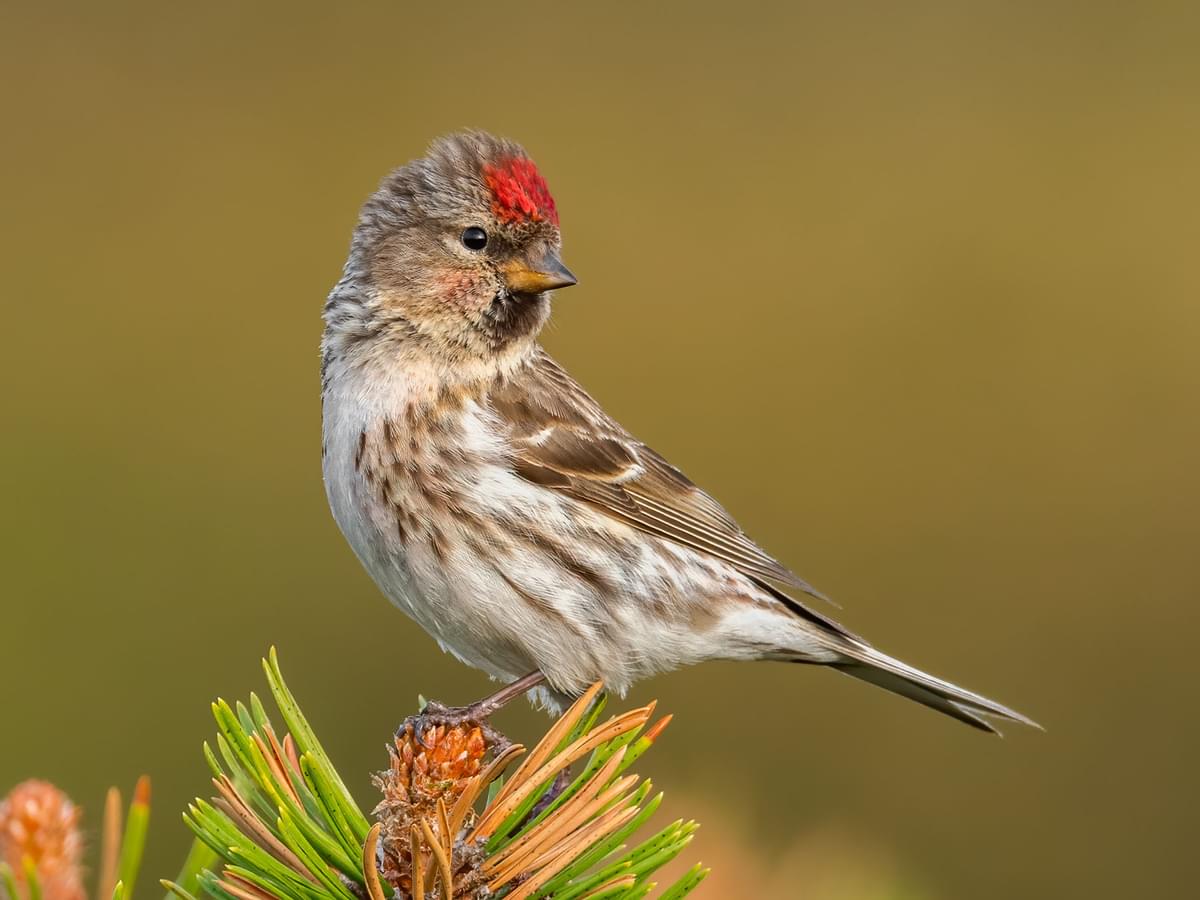
Length
11-13cm
Wingspan
20-22.5cm
Weight
9-12g
Regional Rarity Score
Ranges from 0 (common) to 100 (extremely rare) in this region
This small, streaky finch with a distinctive red forehead patch and (in males) pink-flushed breast brings character to birch woodlands and increasingly to garden feeders.
Their bouncing flight and acrobatic feeding style—often hanging upside-down from the slenderest twigs—make them delightful to watch.
Numbers of Lesser Redpolls increase in gardens during late winter and early spring, particularly in northern and eastern areas. Listen for their distinctive "chuch-uch-uch" calls as small groups move through birch trees or garden alders.
Hawfinch
Coccothraustes coccothraustes
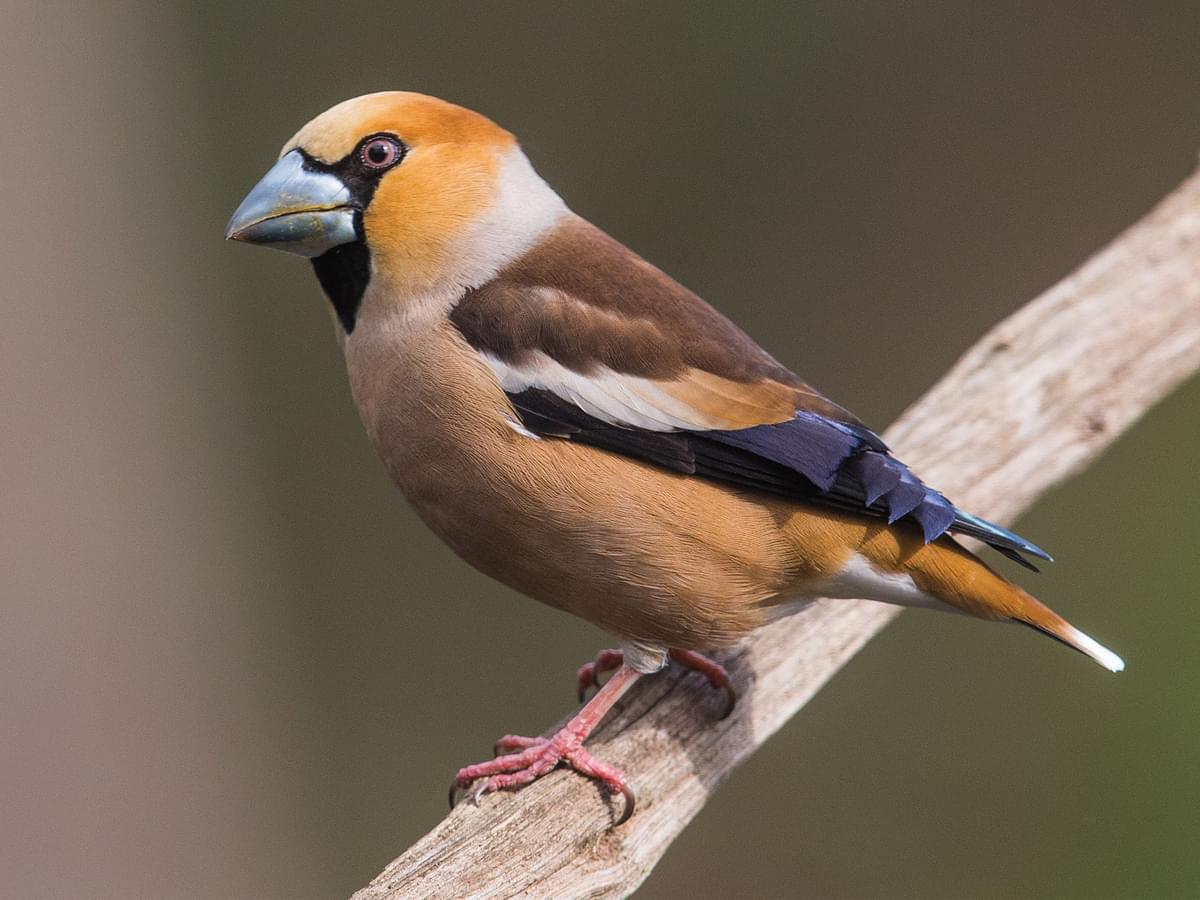
Length
16.5-18cm
Wingspan
29-33cm
Weight
48-62g
Regional Rarity Score
Ranges from 0 (common) to 100 (extremely rare) in this region
The UK's largest and most elusive finch, the Hawfinch possesses a massive, powerful bill capable of cracking cherry stones with ease—exerting a force equivalent to 150 pounds.
Their bull-headed appearance, rusty-orange colouration, and distinctive white wing bars make them unmistakable, though spotting one often requires patience and luck.
Hawfinches frequent mature deciduous woodlands, particularly where hornbeam, yew, and cherry trees grow. Despite their size and striking appearance, they remain surprisingly inconspicuous, often perching motionless high in the canopy. Dawn visits to known haunts offer the best chance of encountering these magnificent but secretive birds.
Linnet
Linaria cannabina
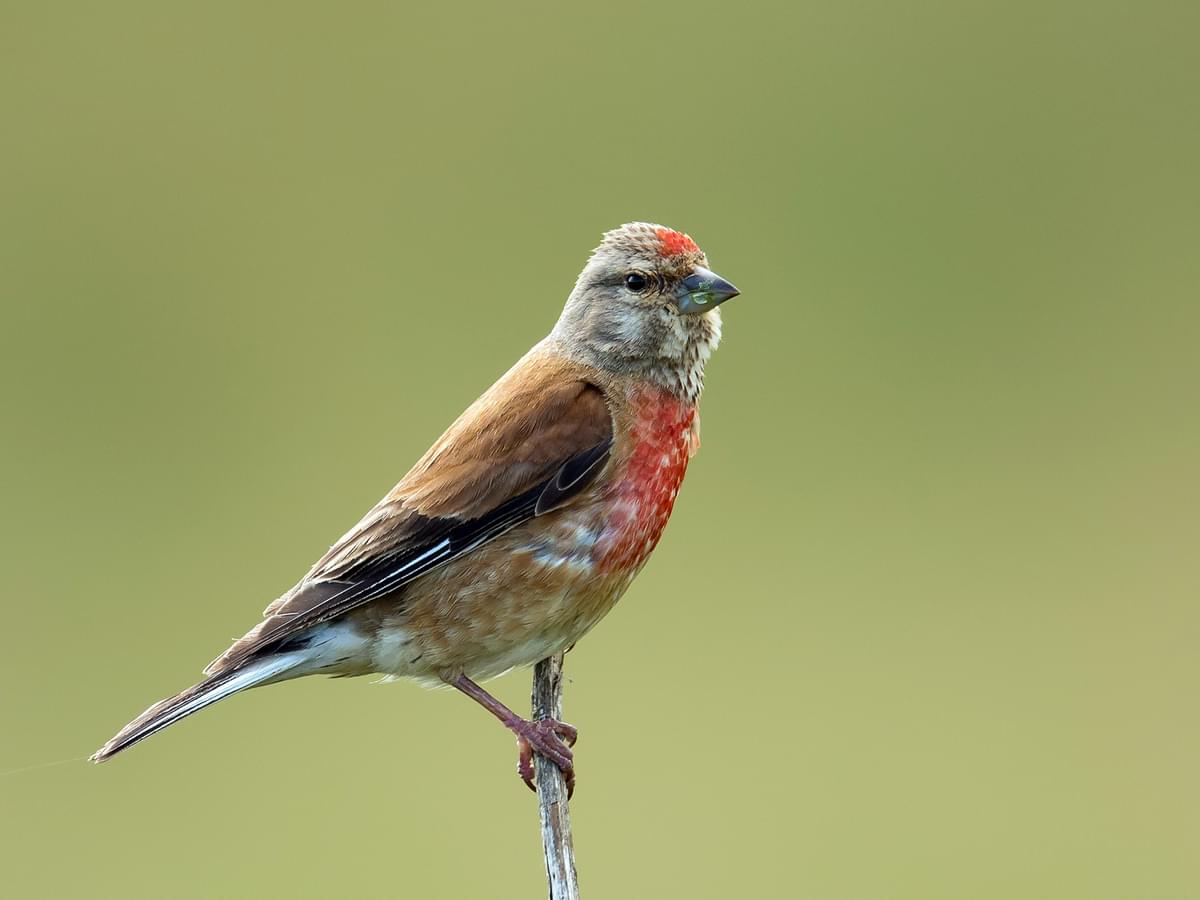
Length
13-14cm
Wingspan
21-25cm
Weight
15-20g
Regional Rarity Score
Ranges from 0 (common) to 100 (extremely rare) in this region
The Linnet, a bird of farmland and heathland, has declined significantly in recent decades. Males develop a glorious crimson forehead and breast during the breeding season, though this fades to a streaky brown in winter. Their melodious, liquid song once made them popular cage birds in Victorian times.
Look for small flocks feeding on seeds in weedy field margins and set-aside land. Their bouncing flight and tendency to perch conspicuously on top of gorse bushes or hedgerows makes them easier to spot than many finches, particularly during the breeding season.
Seasonal Changes in UK Finches
The behaviour and visibility of finches change dramatically with the seasons.
Spring brings territorial displays and nesting activity, with males of many species adopting brighter plumage and delivering songs from prominent perches. Chaffinches become particularly vocal, their ringing songs providing the backdrop to many a spring woodland walk.
Summer finds most finches more secretive during nesting and chick-rearing, though family groups become increasingly evident by late summer. Juvenile Goldfinches, lacking the red face of adults, can be spotted accompanying parents to garden feeders.
Autumn heralds the formation of feeding flocks, sometimes containing hundreds of birds moving together across farmland and woodland edges. These "charms" of finches create moving tapestries against the autumn landscape, their constant contact calls maintaining group cohesion.
Winter brings the most dramatic finch spectacles, with resident species joined by migrants from northern Europe. Gardens with well-stocked feeders may attract impressive variety, particularly during cold snaps when natural food becomes scarce or snow-covered.

A 'charm' of Goldfinches
Attracting Finches to Your Garden
Creating a finch-friendly garden is relatively straightforward with the right approach:
- Provide specialised food: Nyjer seeds prove irresistible to Goldfinches and Siskins, while sunflower hearts attract virtually all finch species. Feeders designed specifically for these smaller seeds work best.
- Plant natural food sources: Teasels, thistles, dandelions, and lavender all produce seeds relished by finches. Consider leaving a patch of garden unmown to allow these plants to set seed.
- Maintain good hygiene: Regular cleaning of feeders helps prevent the spread of trichomonosis, which has devastated Greenfinch populations. Rotate feeding stations and disinfect them regularly.
- Provide water: A shallow bird bath attracts finches for drinking and bathing, activities they particularly enjoy.
- Create cover: Dense shrubs and hedges provide essential shelter and potential nesting sites for species like Bullfinches and Greenfinches.
Conservation Concerns
While some finch species thrive, others face significant challenges. Greenfinches continue to struggle with trichomonosis disease, while farmland specialists like Linnets and Twites have declined dramatically due to agricultural intensification and habitat loss.
Climate change affects migration patterns, with some traditionally migratory finches now overwintering in the UK rather than travelling south. Meanwhile, garden feeding has helped species like Goldfinches and Siskins adapt and even thrive in human-altered landscapes.
By understanding these remarkable birds and providing appropriate habitats and food sources, we can all contribute to ensuring that the diverse finch family continues to bring colour and song to Britain's skies for generations to come.
House Finch in the UK
The House Finch (Haemorhous mexicanus) is not present in the United Kingdom. This North American species has never established a wild population in Britain. Any reported sightings would likely be escaped cage birds or misidentifications of similar species such as the Common Rosefinch, which occasionally appears as a rare migrant visitor.
